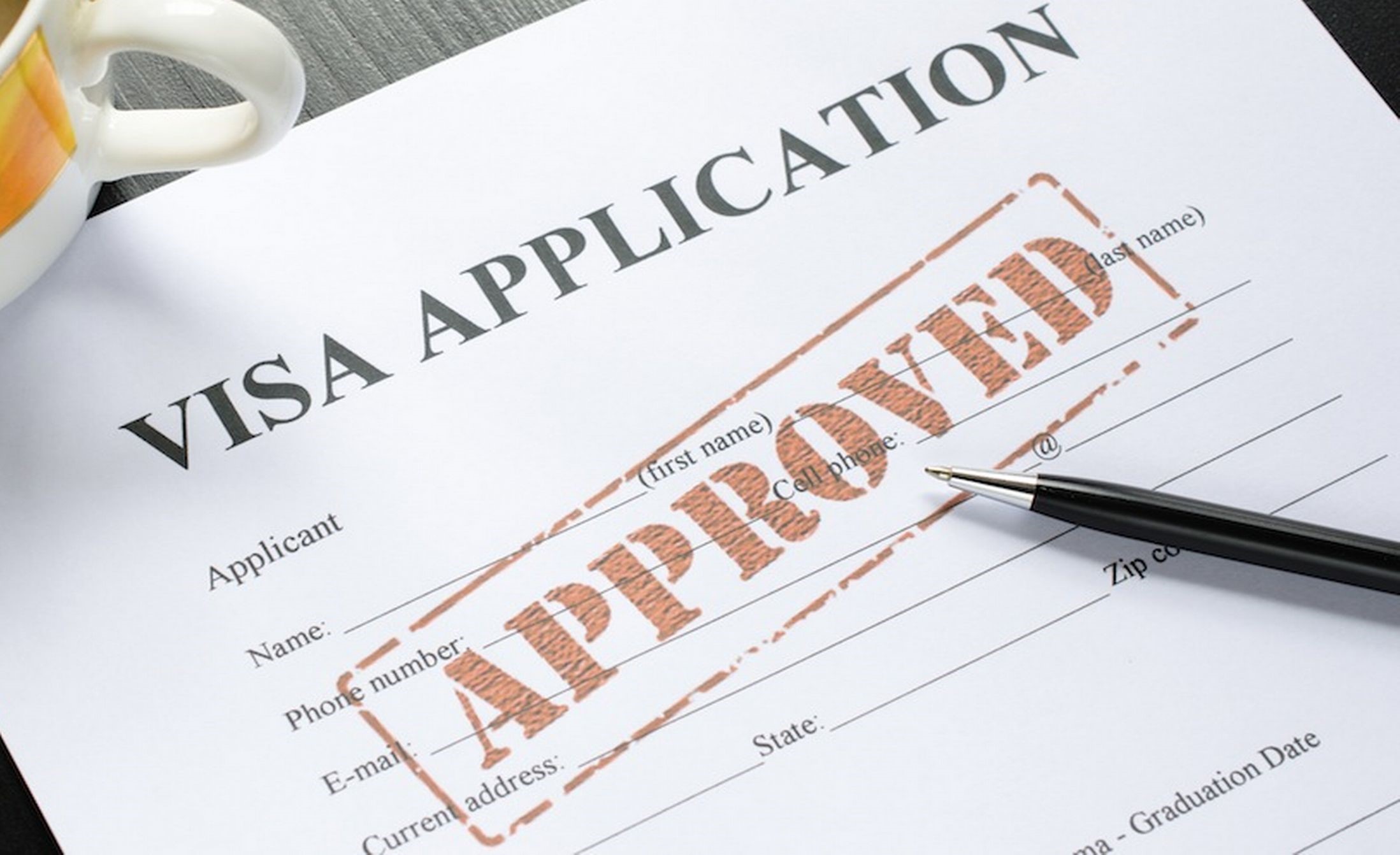With its stunning landscapes, rich culture, and delicious cuisine, Vietnam has become a popular destination for travelers from all over the world. And now, thanks to the Vietnam government’s initiative, …

Currently, e-Visa is the latest type of visa application applied in Vietnam since 2017, which provides an opportunity to apply an entry visa to Vietnam for foreigners in a simple and fast way. To apply an electronic visa, all you need is an internet-connected device, a scanned copy passport, a personal photo and a Visa or Master Card to pay the electronic visa application fee. Only 2 working days later, you can get the visa. Print it out, take a plane (or train, bus, cruise) to the entry gate, show the Evisa, and enter Vietnam.
As its name indicates, Evisa means an electronic visa. This is a legal license that allows foreigners to enter Vietnam and use it to travel in the country. The Vietnam e-Visa is valid only once and for a period not to exceed 30 days. With this type of e-visa, if you are a foreigner who wants to enter Vietnam, you can apply directly for an electronic visa through an agency, organization, travel guarantee company or via the e-Visa website of the Vietnam Immigration Department Service at:
https://www.vietnamimmigration.com/apply-vietnam-visa/
As we all know, the original visa form is a type of visa attached to the passport for use when entering and leaving the countries. Applicants can usually go directly to the Vietnamese embassies or consulates in their country to submit the visa application, and receive the result after about 7 working days. But not all countries have Vietnamese representative offices to obtain visa in this way. With the boom of globalization, the need to move between countries need an easier, faster and simpler types of visa, so the type of visa upon arrival was born.
With visa on arrival, foreign visitors only need to apply for an approval letter and use this paper to apply for a visa at the airport, pay the fee and receive the visa to enter Vietnam. Although the visa upon arrival helps to save the effort to travel to Vietnamese embassies, it also suffers from some inconveniences. The number of foreign tourists frequent to Vietnam is too much, and they often have to wait for a long time at the visa on arrival counter. Therefore, the third type of e-visa has been published in Vietnam.
The Vietnam e-Visa type helps foreign visitors to obtain visas quickly in about 1 to 2 working days, all online. All you need are: Preparing the necessary documents, uploading them on the registration site, providing information, paying fees and waiting for two days to get the visa. Then you just need to print it out or save the visa file on your devices in order to be able to show it to the immigration officers at the entry gate and enter Vietnam quickly. It can be said that this is a step forward and a revolution so that foreign visitors can come to Vietnam in procedures much faster than before.
Although the Vietnam e-Visa type is one of the best options when you need to apply for a visa to Vietnam, you also need to think about that currently Vietnam only publishes e-visas to 80 countries and 2 territories. For Chinese tourists, Vietnamese e-visas are not issued to those whose passport numbers begin with the letter “E”.
Below is a list of countries and territories where Vietnam currently implements the type of e-visa.
The Vietnam electronic visa is now divided into two types: electronic tourist visa and electronic business visa. For both types of visas, the Vietnamese government grants a one-time visa for a period of no more than 30 days. Therefore, the type of e-visa is only suitable for those who want to enter Vietnam once and for a short time (within 30 days).
For those who wish to enter Vietnam multiple times or with a longer entry time, you can only apply for a visa directly at the embassy or visa upon arrival with multiple entry.
To apply for an electronic visa in Vietnam, you only need to prepare the following necessary documents: Your passport (valid for at least 6 months, more than two blank pages) and a personal digital photo (size 600 x 400 pixels) and payment card (credit or debit card).
After you have prepared all the documents listed above, you only need to use your phone or computer to access the Internet and take steps to apply for an electronic visa Vietnam as follows:
Step 1: Enter the online Vietnam e-Visa registration portal on the link
https://www.vietnamimmigration.com/apply-vietnam-visa/
There are instructions for steps in English that you can easily follow.
Step 2: Fill in the necessary information on the website. You need to upload your digital photo + scanned passport, complete the relevant information and choose the suitable type of visa you want to apply, then press Next to proceed to the next step. You also need to type the email address which you use to get visa. Carefully check because if wrong typing, you will not receive any result.
Step 3: Pay the electronic visa fee (the official application fee of US $25 visa fee and US $10 service fee. This total fee will be full refunded if you do not receive the visa. It’s also for guaranteed that your visa will come from 1 – 2 working days of process.
Step 4: Get the results through email and print the visa. Usually after 2 working days, if your application is approved, the Vietnam Immigration Department will send an electronic visa to the email that you registered and you only need to print it out and present it with your passport when arriving at the Vietnamese entry gates.
Vietnam electronic visa is currently only accepted at the entry gates in the list below, so you should search and select the appropriate entry gates for your Vietnam trip. Vietnamese e-visas have been approved at land borders, airports and sea ports.
| No. | Entry ports |
| International airports | |
| 1 | Cat Bi International Airport (Hai Phong) |
| Cam Ranh International Airport (Khanh Hoa) | |
| 3 | Can Tho International Airport |
| 4 | Da Nang International Airport |
| 5 | Noi Bai International Airport (Ha Noi) |
| 6 | Phu Bai International Airport |
| 7 | Phu Quoc International Airport |
| 8 | Tan Son Nhat International Airport (Ho Chi Minh City) |
| Border Land Crossing | |
| 9 | Bo Y Landport (Kon Tum Province) |
| 10 | Cha Lo Landport (Quang Binh Province) |
| 11 | Cau Treo Landport (Ha Tinh Province) |
| Huu Nghi Landport (Lang Son Province) | |
| 13 | Ha Tien Landport (Kien Giang Province) |
| 14 | Lao Bao Landport (Quang Tri Province) |
| 15 | Lao Cai Landport (Lao Cai Province) |
| 16 | La Lay Landport (Quang Tri Province) |
| 17 | Moc Bai Landport (Tay Ninh Province) |
| 18 | Mong Cai Landport (Quang Ninh Province) |
| 19 | Nam Can Landport (Nghe An Province) |
| 20 | Na Meo Landport (Thanh Hoa Province) |
| 21 | Song Tien Landport (An Giang Province) |
| 22 | Tinh Bien Landport (An Giang Province) |
| 23 | Tay Trang Landport (Dien Bien Phu Province) |
| 24 | Xa Mat Landport (Tay Ninh Province) |
| Seaports | |
| 25 | Chan May Seaport (Hue city) |
| 26 | Da Nang Seaport (Da Nang city) |
| 27 | Duong Dong Seaport (Phu Quoc island) |
| Hon Gai Seaport (Quang Ninh Province) | |
| 29 | Hai Phong Seaport (Hai Phong Province) |
| 30 | Nha Trang Seaport (Khanh Hoa Province) |
| 31 | Quy Nhon Seaport (Binh Dinh Province) |
| 32 | Ho Chi Minh City Seaport (Ho Chi Minh City) |
| 33 | Vung Tau Seaport (Ba Ria Vung Tau Province) |
For the fees of obtaining a Vietnam electronic visa, you only need to pay one time and you do not need to pay any additional fees when entering Vietnam. This fee is charged according to the Vietnamese visa regulations of US $25 visa fee and US $10 service fee as mentioned above and will be refunded in rejected cases. However, the fee for business visa will be higher:
– Total US $55 for electronic tourist visa
– Total US $55 for electronic business visa
The time to receive an electronic visa according to the website you apply with. The normal processing time takes 2 working days, and I some cases you can get it within 1 working day (or even 2 working hours with express service).

The process of obtaining an electronic visa in Vietnam is very simple, after 2 working days an electronic visa will be sent to your email
It can be noted that the Vietnamese e-visa is a type for obtaining a fast and comfortable visa. You can submit your application for an electronic visa by yourself through the Internet with appropriate documents. It takes only a few minutes to complete the application form online and takes 2 working days to get the result though email. However, you should note:
There is also a kind of online visa, which is visa on arrival. This visa requires the visa approval letter and this letter is applied online at the same link with Evisa. Therefore, you must choose the correct type of visa in application form as “Evisa, 30 days single entry”. If you choose the wrong one, the cost is cheaper (only 6 USD) but you have to pay the visa stamp fee at the airport (US $25) and take time to get line at visa on arrival counter to receive the visa at the airport.
Evisa can use to enter and exit Vietnam only once. When you leave Vietnam, the visa is immediately invalid. In case you want to visit Vietnam more than once, you should apply two separate Evisa (or apply a visa on arrival with multiple entry).
The maximum time for one Evisa is 30 days. It can be extended when it’s expired, but the price of extension is a bit high. So, you should consider to apply a visa on arrival if you need to stay more than 30 days.
Above is all information about Vietnam Evisa. If you have any question about your specific cases, you can send us an email through info@vietnamimmigration.com. Hope you have a good overview about Vietnam electronic visa, and have a good trip to Vietnam!

With its stunning landscapes, rich culture, and delicious cuisine, Vietnam has become a popular destination for travelers from all over the world. And now, thanks to the Vietnam government’s initiative, …

To be able to enter another country for various purposes such as travel, work or other purposes, the visa is one of the necessary documents that you need to prepare. …

